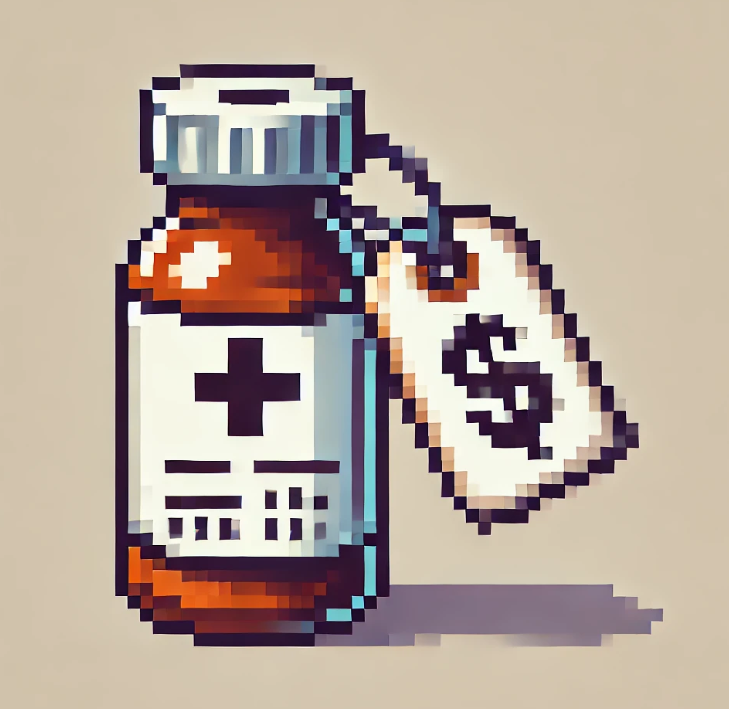
The Impact of Patent Expirations
Imagine this: you’re a public health professional working tirelessly to ensure that patients get access to the best treatments available. You rely on cost-effectiveness analyses (CEAs) to guide your decisions, helping you navigate the complex terrain of drug pricing and healthcare resources. But what if the tools you rely on aren’t telling the whole story?
This scenario is more common than you might think, especially when it comes to how patent expirations affect drug prices. A recent study has shed light on this critical issue, revealing that the expiration of drug patents leads to significant price decreases—a factor that’s often overlooked in cost-effectiveness analyses. These findings have far-reaching implications, particularly for those making policy decisions or working on the ground in public health.
The Study: A Global Perspective on Drug Prices
The research in question examined drug pricing trends across eight high-income countries: Australia, Canada, France, Germany, Japan, Switzerland, the UK, and the US. By analyzing data from over 500 drugs that lost patent protection between 2011 and 2020, the study aimed to quantify the price drops following patent expirations and explore how these changes impact cost-effectiveness analyses.
So, what did the researchers find? Drug prices plummeted after patents expired. The extent of the price decreases varied by country, with the US and Australia seeing the most significant drops—82% and 64%, respectively, over eight years. In contrast, countries like Switzerland experienced a more modest 18% decrease.
These findings are crucial because they highlight the variability in price reductions across different healthcare systems. This variability can lead to inaccuracies in cost-effectiveness analyses if post-patent price dynamics aren’t considered. In other words, if you’re not accounting for these price changes, your analyses might be giving you a skewed picture of a drug’s value.
Why This Matters: The Real-World Implications
You might be wondering, “Why should I care about drug prices after a patent expires?” The answer lies in how these prices influence the broader healthcare landscape, particularly in terms of cost-effectiveness.
Cost-effectiveness analyses are a cornerstone of public health decision-making. They help determine whether a new drug offers good value for money compared to existing treatments. However, if these analyses don’t consider the price drops that occur after a patent expires, they could either overestimate or underestimate a drug’s value. This can have serious consequences for healthcare budgets, patient access to treatment, and overall public health outcomes.
For example, let’s say a new, highly effective drug enters the market. If the cost-effectiveness analysis doesn’t factor in the expected price drop of a comparable drug post-patent expiration, the new drug might seem less cost-effective than it actually is. This could lead to its exclusion from healthcare formularies, denying patients access to potentially life-saving treatments. Conversely, if a less effective drug appears more cost-effective due to a patent expiration oversight, it might be wrongly favored, leading to suboptimal patient outcomes.
The Bigger Picture: A Call for Comprehensive Analyses
The study’s findings underscore the need for more comprehensive cost-effectiveness analyses that account for post-patent price dynamics. This is particularly important in countries where healthcare decisions are heavily influenced by CEAs, such as the US and the UK.
But it’s not just about adjusting the numbers in an analysis—this issue touches on broader themes of equity and access. When cost-effectiveness analyses don’t accurately reflect the true cost of drugs, it can lead to disparities in treatment availability. Patients in high-income countries might have better access to generics after a patent expires, but what about those in lower-income countries? Ensuring that CEAs are as accurate as possible is a step toward addressing these inequities.
Moreover, these findings have implications for drug manufacturers and policymakers. For manufacturers, understanding how patent expirations will impact drug pricing can inform decisions about pricing strategies and market entry. For policymakers, incorporating these price dynamics into healthcare planning can lead to more sustainable and equitable healthcare systems.
Real-World Example: The Case of Chronic Disease Treatments
Let’s consider a real-world example to illustrate the importance of these findings. Imagine a new drug designed to treat a chronic condition like diabetes, a disease that requires lifelong management. The drug is initially under patent, making it expensive and potentially out of reach for many patients.
However, once the patent expires, generic versions flood the market, and prices drop significantly. If a cost-effectiveness analysis conducted before the patent expiration didn’t account for this future price drop, it might have painted an overly bleak picture of the drug’s value, potentially leading to restricted access for patients who need it most.
Now, imagine the opposite scenario: the cost-effectiveness analysis assumed prices would remain constant even as the drug’s patent expired. This could lead to an overestimation of the drug’s cost-effectiveness, potentially causing healthcare systems to invest in it at the expense of other, more cost-effective treatments.
Join the Conversation
This research opens up important questions about how we assess drug value and make decisions that impact public health. What are your thoughts on how patent expirations should be factored into drug pricing and cost-effectiveness analyses? Have you encountered situations where the real-world price of a drug differed significantly from what was expected? How did that impact your work or the health outcomes of your patients?
Share your experiences and join the conversation in the comments below or on social media. Let’s explore how we can work together to ensure that cost-effectiveness analyses are as accurate and equitable as possible.
Join the Community – Get Your Weekly Public Health Update!
Be a health leader! Subscribe for free and share this blog to shape the future of public health together. If you liked this blog, please share it! Your referrals help This Week in Public Health reach new readers.



